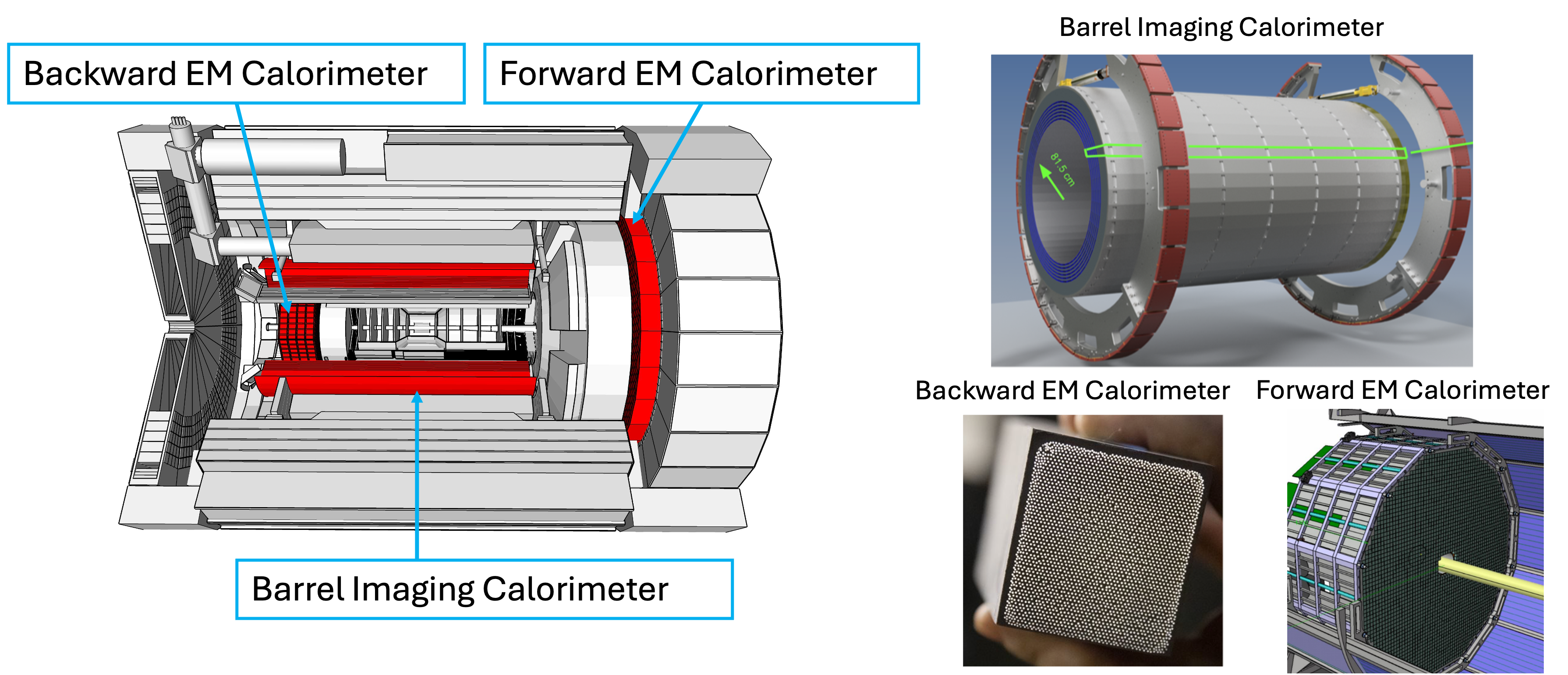The ePIC Detector
- Central Detector
- Superconducting Solenoid
- Tracking Detectors
- PID Detectors
- Electromagnetic Calorimeter Detectors
- Hadron Calorimeter Detectors
- Far Detectors
The ePIC detector instruments state of the art detector technology to provide precision momentum, energy and particle identification over a large acceptance. This is achieved using several detector suites which make up the central detector, providing coverage from about 3—177 degrees (|η| < 3.5), while the far foward and backward detectors expand the acceptance to |η| > 6.
Central Detector

The ePIC Central Detector is very compact spanning a cylindrical volume that is about 9.5m longitudinally and 2.67m radially, covering an acceptance of about 3°-177°, limited by the beam pipes. The transverse momentum of charged particles are measured by reconstructing the particle’s trajectory. This is achieved through its tracking system consisting of state-of-the art silicon and micro-pattern gas detectors, which are instrumented within a 1.7T magnetic field, generated from a 2.8m bore diameter superconducting solenoid magnet. A combination of electromagnetic calorimeters and hadron calorimeters is implemented to measure the energy that particle’s deposit as they traverse these layers. Finally, to identify the type of particle being detected, a set of fast timing and Cerenkov based particle identification detectors are implemented.
Superconducting Solenoid

Tracking Detectors
The ePIC central tracking system is composed of several detectors leveraging state-of-the-art silicon and micro-pattern gas detector (MPGD) technologies. The inner tracker volume consists of highly granulated silicon detectors making up three vertex layers, two-barrel layers, and 5 disks in both the lepton and hardon going directions. Whereas the outer tracking volume is instrumented with large-area MPGDs, with two-barrel layers and two discs in each of the lepton and hadron going directions. The silicon and MPGD detectors cover roughly 7.5 m^2 and 34.4 m^2, respectively. The combination of the silicon and MPGD based tracking system, along with the solenoid magnet, forms a robust tracking system capable of providing excellent tracking performance through its use of high precision measurements.
PID Detectors

Electromagnetic Calorimeter Detectors

Hadron Calorimeter Detectors

Far Detectors

The detector hermeticity is to a large extent restore equipping the angular regions not covered by the central detector by the Far Detectors situated along the outgoing beam lines. The Far Detectors along the outgoing ion beam line detect proton with different magnetic rigidity, soft photons and neutron. Along the outgoing electron beam line, the low Q2 tagger station complete the Q2 acceptance of the Central Detector, while the luminosity station makes possible the, measurement and monitoring of the luminosity provided by the collider.